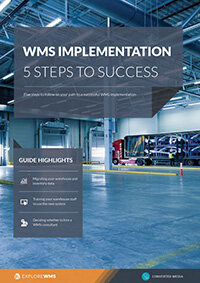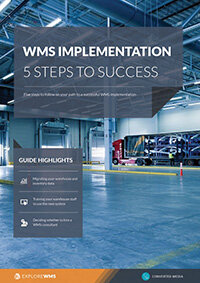Three steps to a watertight WMS data migration
As one might expect, any large WMS data migration involves a number of necessary steps. However, of all of the most critical elements involved, testing the final stability and accuracy of a consequent update is perhaps the most concerning to most enterprise operators.
This is because once an enterprise has all of its data has been moved, the next questions usually becomes ‘are the resultant records delivering information accurately, and as advertised; and when can the business begin to leverage its next-steps value’? As a result, here are a number of ways to define and execute a WMS data migration, without having to deal with too much muss and fuss.
1. Time-to-complete planning
Before you can get started on validating the efficiency of your information and migrating your WMS data, it is best to establish and understand various expectations regarding the time necessary to complete the effort. For example, what will you want from the overall test process -are you looking for accuracy first, or is enhanced speed is going to be the preeminent factor? Believe it or not, these elements are important since ‘how the user feels’ from the outset will ultimately guide most validation rounds. So, figure out what you’re going to want from the system first from a time to complete perspective; then prepare to do the empirical investigations.
2. WMS data quality
This is really where the rubber usually hits the road. In this step it’s best to ensure that your documentation is up to snuff, including ‘before and after’ WMS data maps, security concerns, availability of policy and business rules, and every other bit of administrivia necessary to prepare to review and measure the new data store. If you don’t spend the proper time to execute this process properly, you’ll be working in the dark; and everyone knows that very bad things happen at night.
3. The WMS data migration process
WMS data migrations these days generally involve movement from premise-based systems to the cloud. While this decision triggers its own set of challenges, there’s a clear upside in the offing, particularly if you are moving your data to one of the more reputable public networks such as Amazon Web Services (AWS). In this case, the environment helps the tester, since AWS harbors a number of highly-useful automated systems that allow the user to establish and run test regimes in an unattended mode.
This means that all you’ll have to do is manage the results of your effort by comparing what you think will happen against what actually happens, including the announcement of one or more failures. In the latter case, then, the automated system can help with any remedial actions, then run the routine again after the fix has been completed.
More than anything, test processes are supposed to be simple enough to ‘see’ problems; then fix them before the user begins to spin the entire system up to reach active operational status. However, automation or not, the more detail you and your IT cadre apply during the test’s setup, the better results you will achieve during your WMS data migration.
Free white paper

WMS implementation guide
Plan your WMS implementation successfully with this comprehensive guide

Featured white papers
-

-

-

WMS implementation guide
Plan your WMS implementation successfully with this comprehensive guide
Download
Related articles
-

WMS implementation guide including checklist & project plan
A guide to the entire WMS implementation process - from change management planning to go-live
-

Mission-critical features of food lot traceability software
What features of food traceability software will help you during a food recall
-

If I had known then: steps to successful WMS implementation
A guest blog from PathGuide takes us through the steps of a successful WMS implementation

